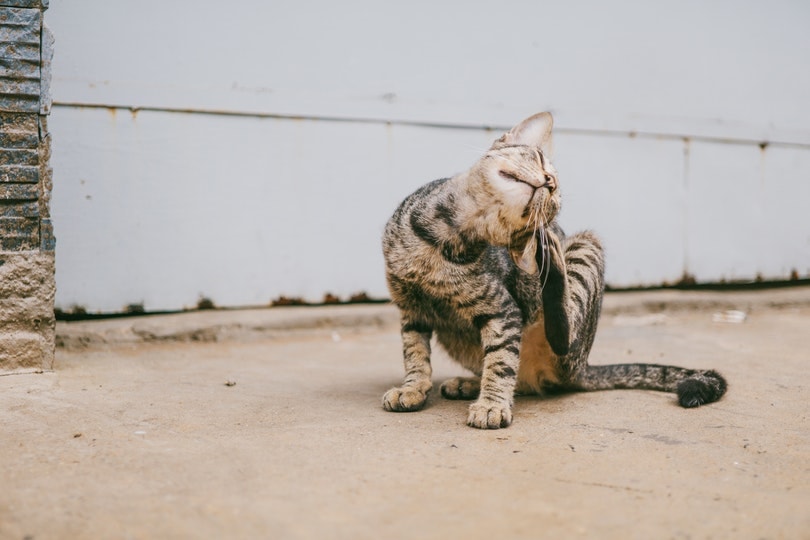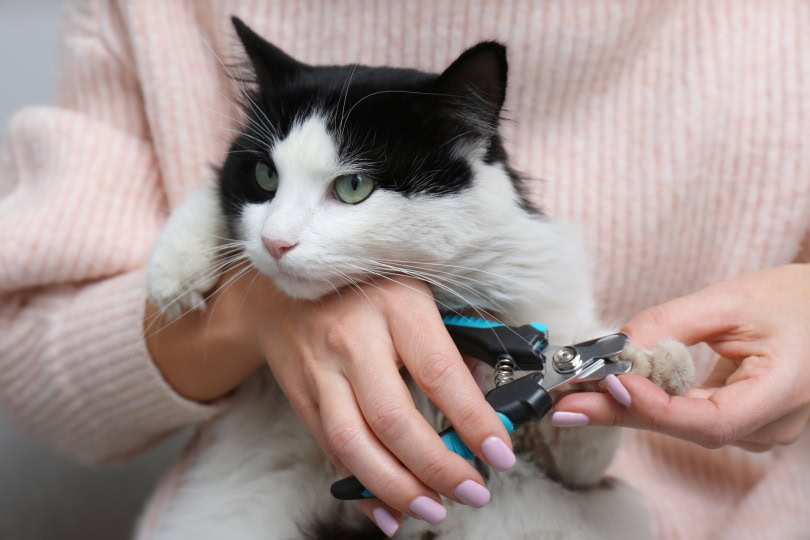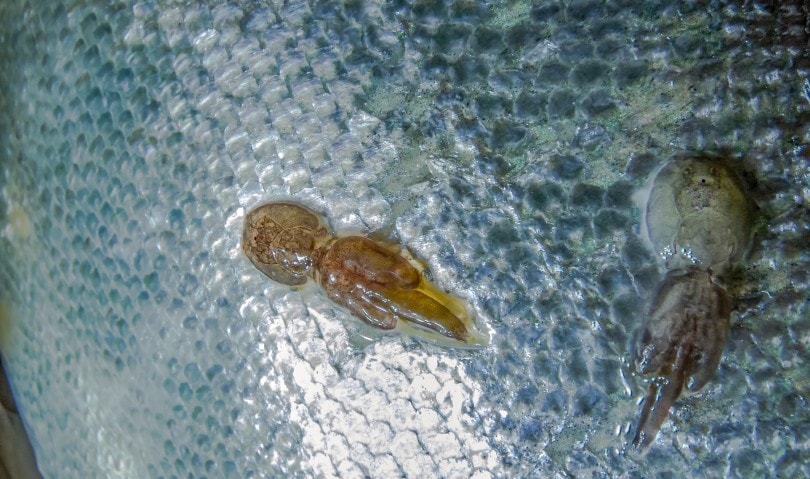VET APPROVED

The information is current and up-to-date in accordance with the latest veterinarian research.
Learn more »Note: Home remedies are not an alternative to professional veterinary advice. If your pet has a skin issue, please consult your vet immediately.
Cats can get dandruff—just like people. There are tons of commercial products and supplements that claim to treat cat dandruff, but these aren’t always easy to use, safe for felines, or effective. Before rushing to try various questionable products, it’s important to understand that dandruff is often a sign of dry skin or other underlying skin conditions, such as parasites like fleas and mites, allergies, and others, all of which will need veterinary input.
Alongside getting the cause of dandruff identified and treated by your vet, there are a few things you can do at home in order to improve your cat’s skin health.

The 8 Home Remedies to Reduce Cat Dandruff
1. Make Dietary Changes

Diet plays a significant role in skin and overall health. If a cat is experiencing dandruff, it may be that they aren’t getting everything they need in their diet to keep their skin and coat in the best possible health. Consult with your vet about the most appropriate diet for your feline based on their age, lifestyle, health, and nutritional needs. A complete and balanced feline diet should contain high-quality ingredients and be rich in animal protein and fat, formulated according to the recommendations of the American Association of Feed Control Officials.
Omega fatty acids may be beneficial for cats with skin problems, depending on its cause. Most cat foods with added omega fatty acids have added fish oil. Others include high levels of salmon or other fish, which are naturally high in omega fatty acids. Flaxseed oil and other plant-based oils are also used. Speak to your vet before giving your cat any supplements, in order to avoid adverse effects, and never use human supplements as these are not safe for cats, and may even be toxic.
- Straightforward with the input from your vet
- Doesn’t require a significant change in routine if veterinary supplements are used
- Can be challenging to switch your cat’s food
- Finding the correct food is often a lengthy process
2. Increase Hydration
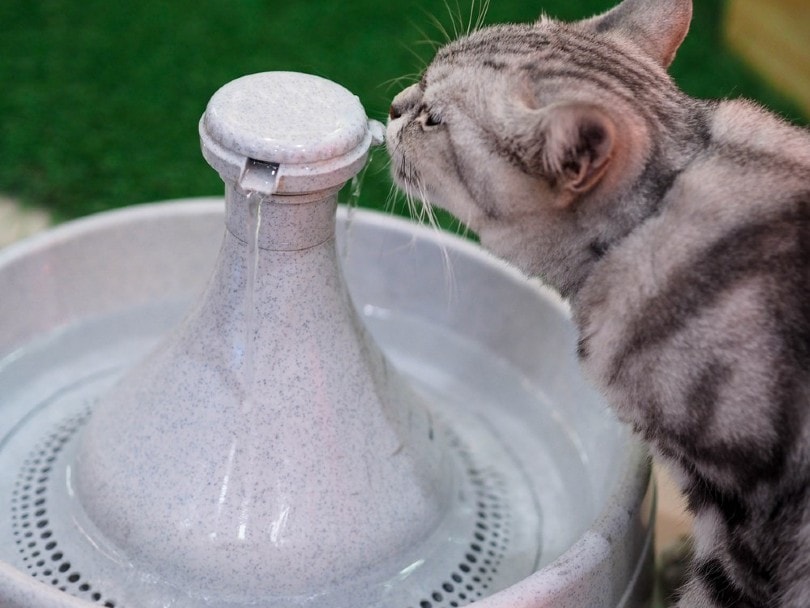
Cats are notorious for not drinking enough. Even if fresh water is available, they may not consume enough of it to stay properly hydrated—just like some people don’t drink enough, even with an abundance of fresh water available.
When cats are dehydrated, their skin may not be as moist and healthy as it should be. Therefore, some cats may develop dry skin. In the wild, cats would receive a lot of moisture from their food. Raw meat is very water-rich. In domesticated cats, this isn’t always the case, though. Many cats eat kibble, which hardly includes any moisture. For this reason, it isn’t odd for cats on kibble-based diets to drink less than they should
You may want to switch your feline to wet food if they aren’t drinking sufficient water. A veterinary visit is also recommended to rule out any possible medical problems that could be causing changes in drinking or dehydration.
You can also add fountains, which are often more appealing for cats to drink out of.
- Finding fountains and wet food is easy
- Improves your cat’s overall health
- Some cats won’t eat wet food
- Wet food isn’t appropriate for all cats
3. Provide Grooming Help
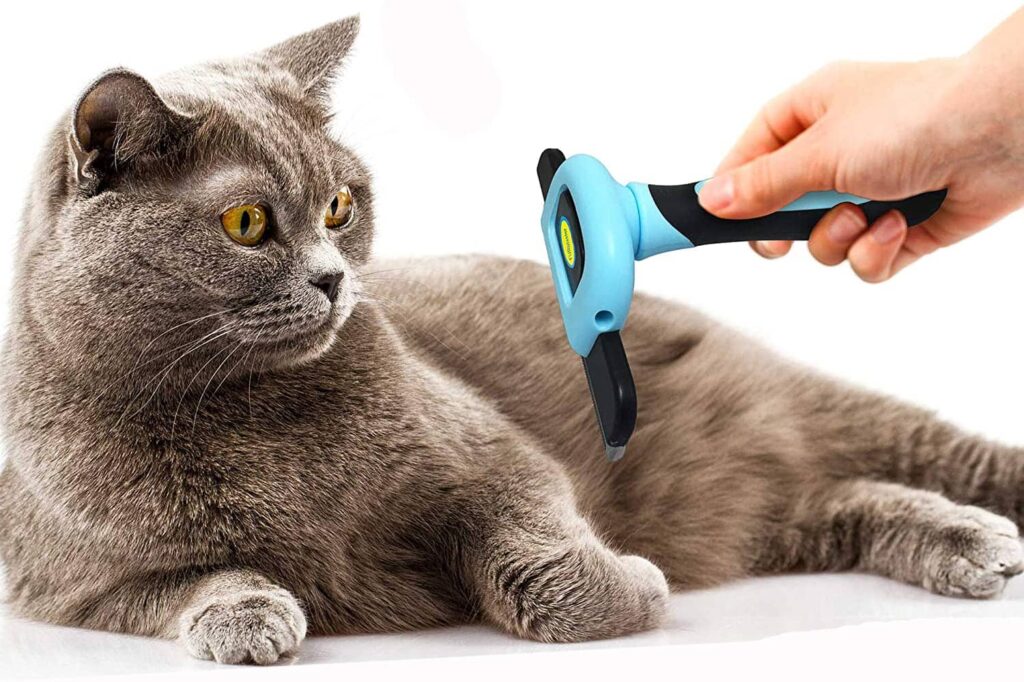
If dandruff seems to be mostly contained to the lower back and base of the tail, your cat may need help cleaning those areas. This problem is most common in obese, sickly, and older cats struggling with mobility. Sometimes, these cats have a hard time reaching that area.
Cat cleansing wipes can be extremely useful in these situations. You could bathe your cat, but this is usually not the best option, and most cat owners who have tried before know why. Most cats don’t like water, and bathing them will surely end up as a bad time—in most cases, at least. Instead, groom this area and brush it gently a few times a week, which also helps to reduce shedding and prevent mats in longhaired cats
- Cat cleansing wipes are easy to use
- Grooming your cat can serve as a good bonding time and help to identify any skin changes or lumps
- Time-consuming
- It may be uncomfortable for your cat
- Some cats don’t tolerate being groomed
4. Use a Humidifier
Sometimes, cats may develop dry skin because their environment is drier than usual. In these cases, we recommend running a humidifier in your home, particularly in the rooms that your feline spends time in.
The more humid a room is, the less likely your cat’s skin is to dry out. Of course, this doesn’t mean that you should keep it too humid, as that may lead to a different set of health issues. Often, an average humidifier is enough to help. If it isn’t, dandruff probably wasn’t due to a dry environment to begin with.
- Plug it in and forget about it
- Impossible to place humidifiers everywhere
5. Bathe Your Cat According to Veterinary Recommendations
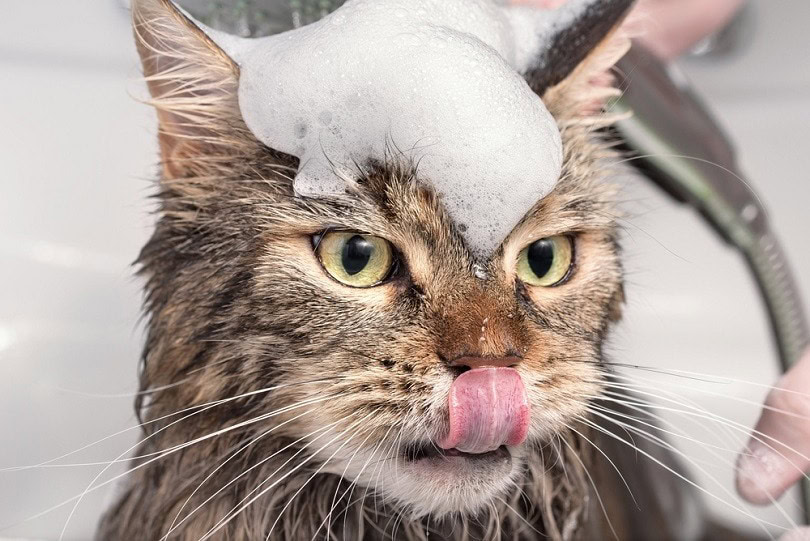
Based on your vet’s advice and the underlying cause of the dandruff, you can bathe your cat using a veterinarian-approved medicated shampoo. Not all cats will enjoy having a bath, and this should be done gently and slowly, through using positive reinforcement rather than forcing anything, so the cat will learn the whole experience is not that unpleasant and will result in tasty rewards. There are many directions and videos out there on how to bathe your cat correctly, but always make sure to follow your vet’s recommendations and use a high-quality veterinary shampoo intended for felines. Sometimes you will just need to bathe a specific area of the body, while other times the whole body should be washed.
- Using medicated shampoos may help with several skin conditions
- You have to bathe a cat
6. Reduce Stress
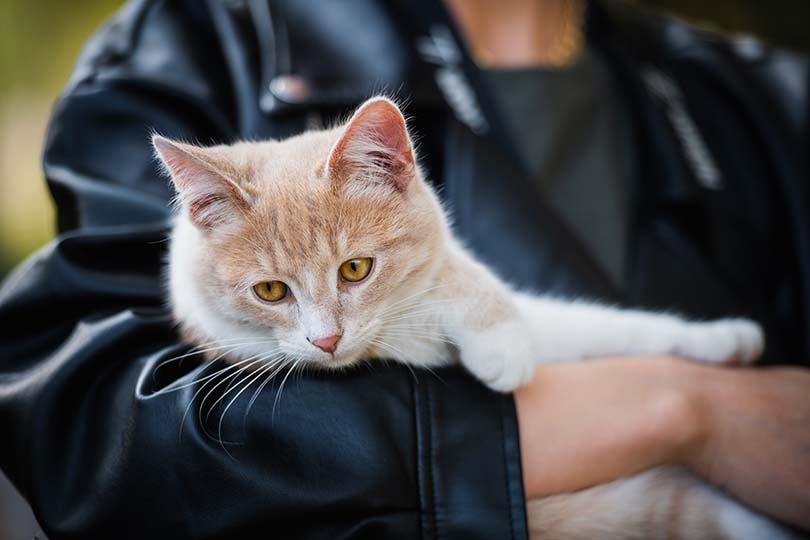
Sometimes, dandruff and dry skin can be due to stress in cats. Cats can become stressed for all sorts of different reasons, including changes in routine, introducing a new animal into the home, or even moving furniture around. Cats tend to be very sensitive to changes. Things minor to us can seem very serious to our cats, especially since we can’t just explain what’s going on.
In many cases, you can reduce your cat’s stress, which may otherwise lead to signs of overgrooming and even skin damage. Other times, you may not be able to avoid a change in the household or your cat’s routine, but you can anticipate it and do your best to make it as easy on your kitty as possible.
Consider using pheromone sprays, as well as ensuring your cat has plenty of hiding spots where they won’t be disturbed, during times of change and stress. They should have their litter box, toys, beds, food, and water bowls within reach as well. Speak to your vet about ways to help your cat during stressful times and how to identify the underlying causes of stress.
- Can improve your cat’s overall health
- Some solutions are straightforward
- Discovering the underlying cause of stress can be challenging
7. Limit Sun Exposure
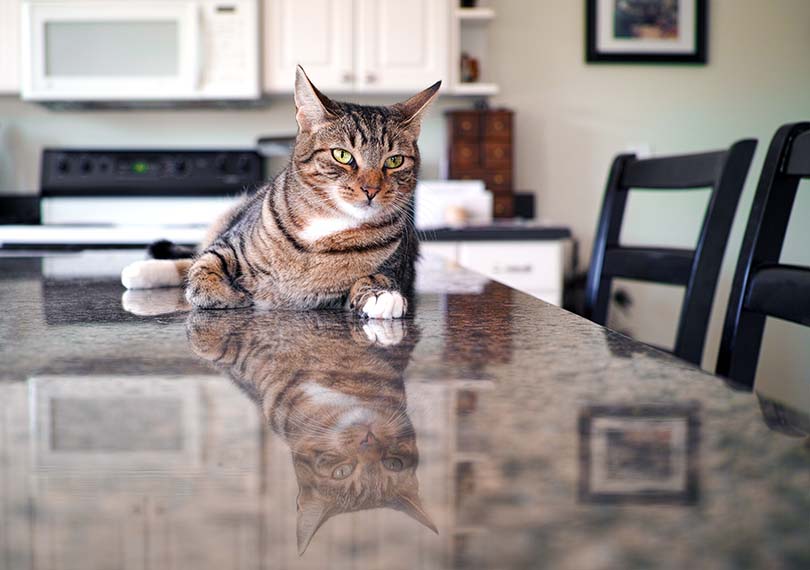
Dandruff and peeling can be caused by sunburns in cats—just like in people. Therefore, if your cat is spending a lot of time in the sun, especially if they have white fur or are hairless, you may want to start limiting their exposure. Lightly colored cats are much more likely to experience sunburn than other felines.
Keeping your cat indoors is likely the best option.
- Very easy to do in some circumstances
- Requires a change in your cat’s routine
8. Try Skin Moisturizer According to Your Vet’s Advice
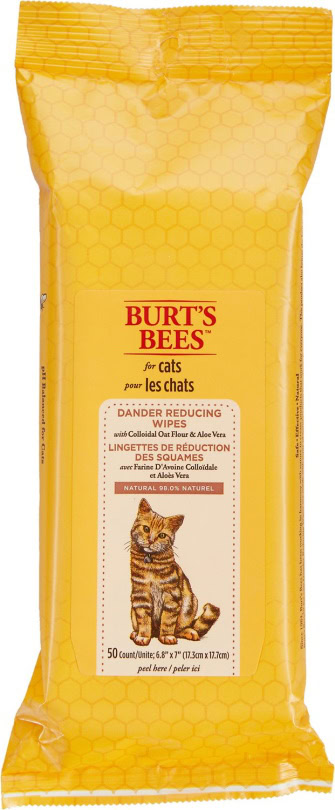
They do make skin moisturizers for cats. It’s a bit like lotion.
As you might imagine, these can help with dry skin in some cases. Some are even specifically made for dandruff. Because lotion is hard to apply to the skin, these moisturizers usually come in wipes or sprays. Wipes are most common for cats, as they can be a bit scared of sprays, and they may lick off the lotion!
- Widely available
- Can be challenging to apply

When to Call the Vet
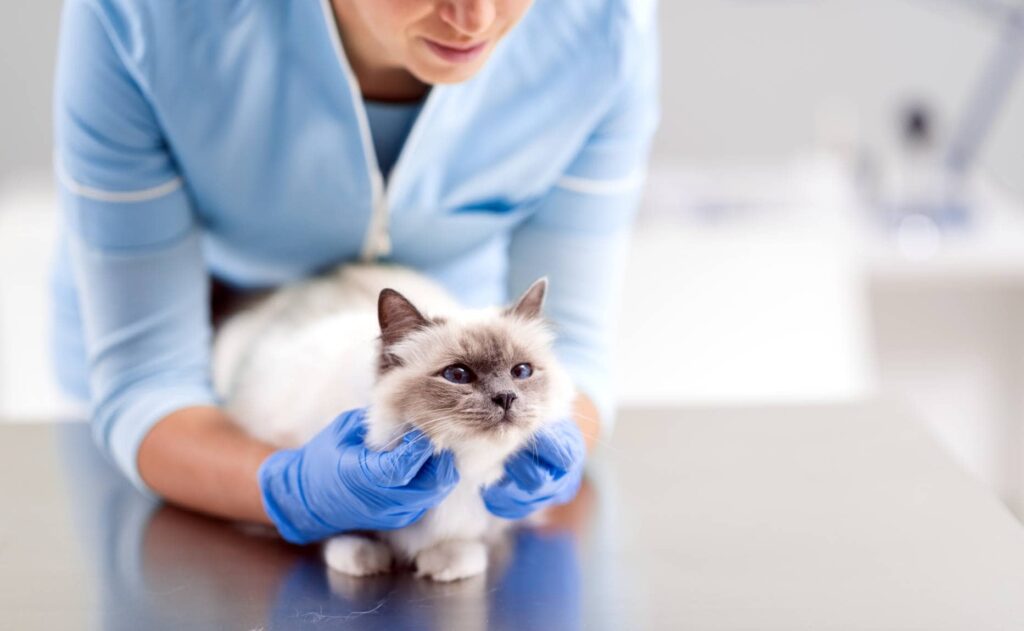
Visiting the vet is recommended if your feline experiences chronic or sudden dandruff. Oftentimes, cat dandruff is linked to more pressing issues, like skin parasites and allergies. You should check with a veterinarian if you suspect an underlying cause of your cat’s dandruff.
Your vet can also rule out other potential health issues before you attempt to solve them through DIY means. It may cost you more initially, but you will save a lot of time and energy trying to narrow in on what’s causing the problem.

Final Thoughts
Skin dandruff in cats can often point to an underlying health issue that will benefit from veterinary input and appropriate treatment. Alongside that, medicated shampoos, moisturizers, balanced and high-quality diet, veterinary-approved supplements, and similar products can all be beneficial. You can also make changes to the environment, such as reducing stress and adding a humidifier.
Sometimes, cats are unable to clean specific areas due to pain, mobility issues, or obesity, which can lead to dandruff. In these cases, cleaning wipes and dealing with the underlying cause of the cleaning difficulties are necessary.
Featured Image Credit: FOX, Pexels
Contents
- The 8 Home Remedies to Reduce Cat Dandruff
- 1. Make Dietary Changes
- 2. Increase Hydration
- 3. Provide Grooming Help
- 4. Use a Humidifier
- 5. Bathe Your Cat According to Veterinary Recommendations
- 6. Reduce Stress
- 7. Limit Sun Exposure
- 8. Try Skin Moisturizer According to Your Vet’s Advice
- When to Call the Vet
- Final Thoughts
